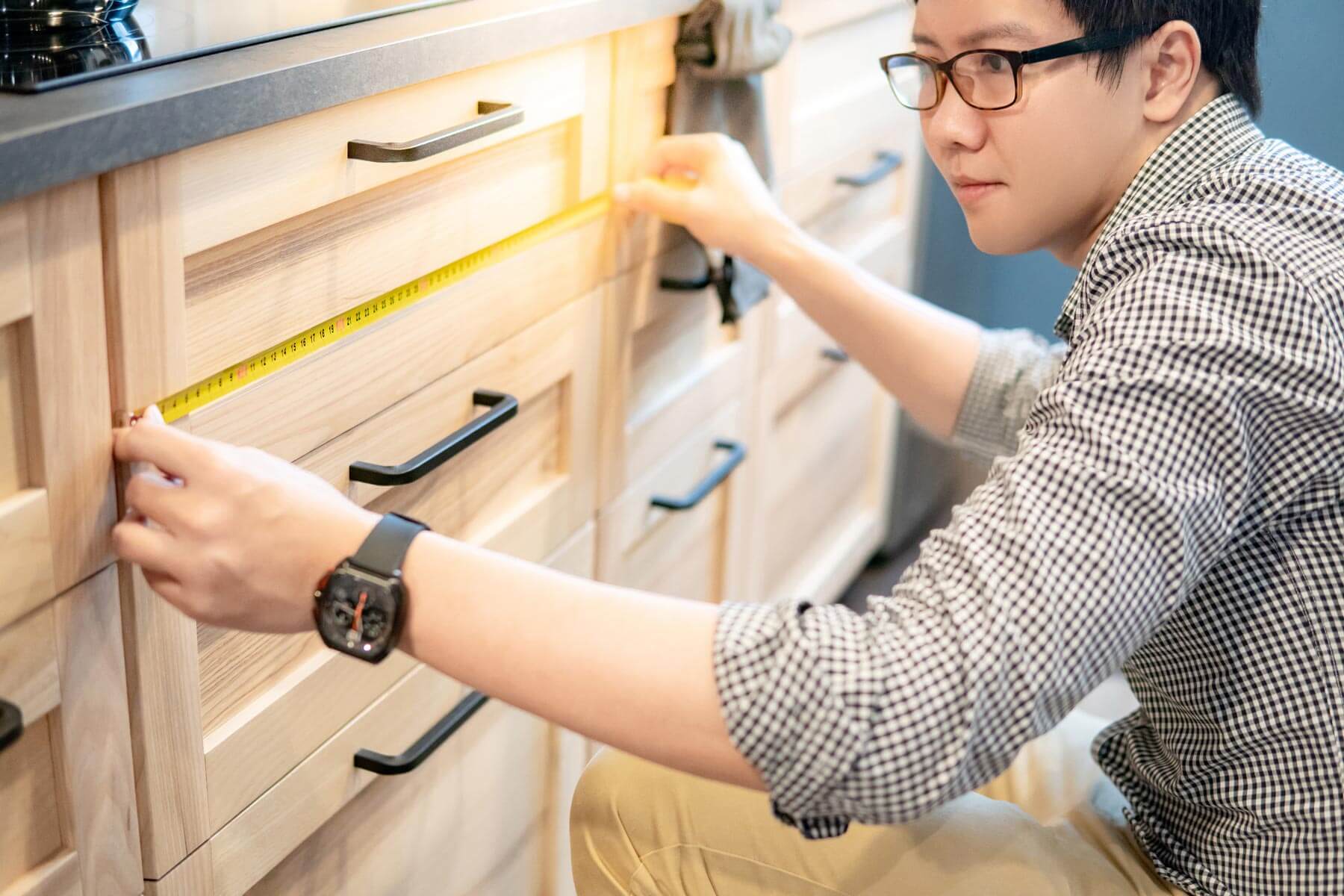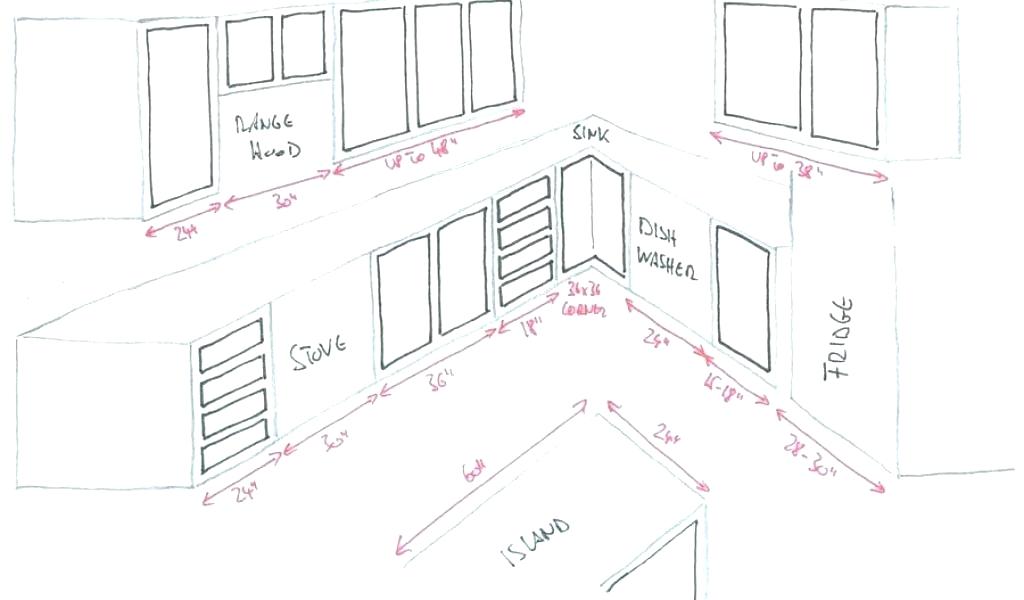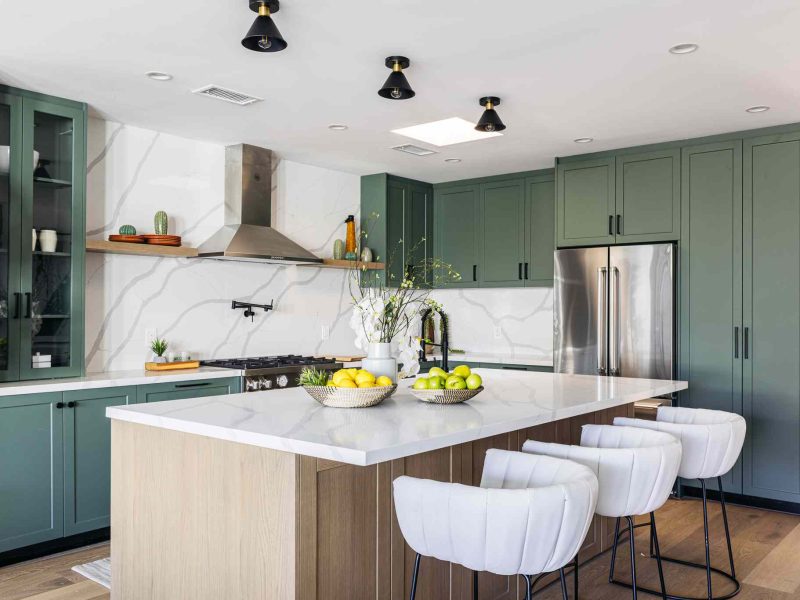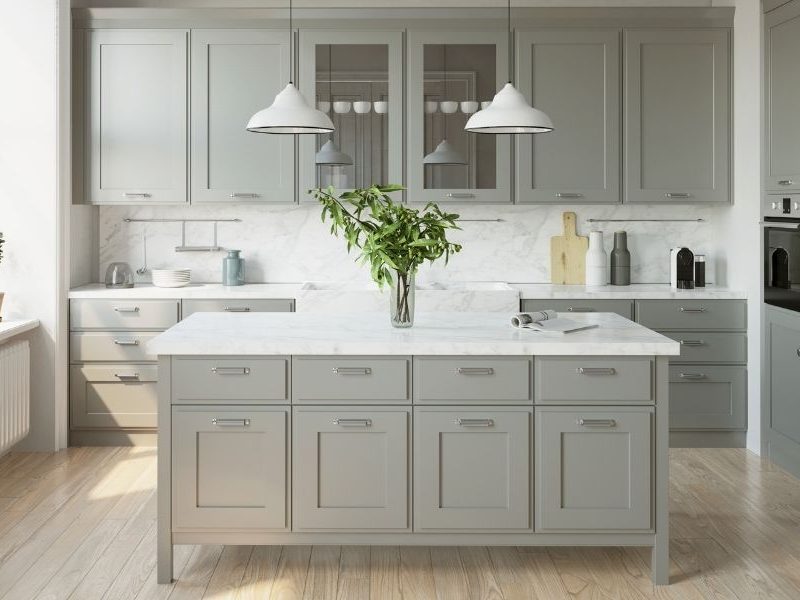Measuring a kitchen for cabinets can seem like a daunting task, but it doesn’t have to be! Taking accurate measurements is essential for ensuring that the cabinets you choose will fit properly in your kitchen. This guide will walk you through the process of measuring your kitchen for cabinets, from understanding the types of measurements you need to take to create a floor plan. By following these steps, you can be sure that your kitchen cabinets will be the perfect fit for your space.
Understanding Kitchen Cabinet Measurements
When planning a kitchen renovation, measuring your kitchen cabinets is an essential step. Knowing the right measurements helps ensure that you purchase the right size cabinets for your kitchen. It also allows you to plan out the layout of your kitchen and determine how much space you have to work with. Whether you’re measuring for stock cabinets or custom cabinets, the same principles apply. In this article, we’ll discuss the basics of measuring a kitchen for cabinets, including what measurements to take, how to take them, and how to use them to plan your kitchen layout.
The first step is to take a look at the kitchen’s floor plan. Measure the length and width of the kitchen and record these numbers. These measurements will be your starting point when planning the layout of your cabinets. Next, measure the walls of the kitchen to determine the available space for each cabinet. Measure the height and width of the wall and take note of any obstacles that may affect the placement of your cabinets, such as windows, doors, and appliances. Once you have all of the measurements, you can start planning your layout.
When measuring cabinets, it’s important to take accurate measurements. If you’re not sure of the measurements, you can use a tape measure or ruler to measure the length and width of the walls and floors. Additionally, be sure to measure the depth of the cabinet openings to ensure that your cabinets will fit properly. Finally, use the measurements to determine the size and number of cabinets needed for your kitchen. With the right measurements in hand, you can create a kitchen that’s both functional and stylish.
Establishing the Overall Size of the Kitchen
Measuring a kitchen for cabinets can seem like a daunting task, but with the right tools and knowledge, it can be surprisingly simple. The first step to measuring a kitchen for cabinets is to establish the overall size of the kitchen. This involves measuring the walls, floor, and ceiling, as well as any existing furniture or appliances. It’s important to measure the length, width, and height of each wall and note any obstacles, like doorways, windows, or light switches, that will affect the layout of cabinets. It’s also helpful to take note of the size of existing furniture and appliances, which can be used as a guide when planning the cabinet layout. Once you have the measurements of the kitchen, it’s time to start planning the layout of the cabinets.
Estimating Wall Measurements
Accurately measuring kitchen walls is critical for getting the right fit for your cabinets. Doing the measurements yourself can be a daunting process but with the right tools and step-by-step instructions, it can be relatively easy. To begin, measure the length of the wall from corner to corner. Next, measure the width of the wall from corner to corner. Finally, measure the height of the wall from the floor to the ceiling.
Once you have the wall measurements, you’ll be able to determine the size of the cabinets that best fit the space. Before committing to a cabinet size, you’ll also need to consider the depth of the cabinet and the distance from the wall to the cabinet door. It’s also important to take into account the door swing of the cabinet. Make sure you account for the clearance needed for the door to swing open.
To ensure your cabinets fit properly, it’s best to get professional measurements done by a qualified installer. This will ensure that your new cabinets look perfect and fit snugly, no matter what the size of your kitchen.

Measuring Countertops and Appliances
When it comes to measuring kitchen cabinets, it’s important to pay attention to both countertops and appliances. When measuring countertops, you should measure the full length and width of the countertop, including any overhangs. Additionally, you should measure the distance between countertops and the walls, as well as the distance between countertops and appliances. Measuring appliances such as ovens, microwaves, and dishwashers is just as essential. You’ll need to measure the height, width, and depth of each appliance.
Don’t forget to measure any additional appliances such as refrigerators and freezers. It’s also important to measure any existing cabinetry in the kitchen to ensure that the new cabinets fit properly. Taking accurate measurements is the key to a successful kitchen remodel. Be sure to measure twice and cut once to ensure that your cabinets fit perfectly and look great when installed. With the right measurements, you’ll be able to create the perfect kitchen with cabinets that fit perfectly.

Determining Cabinet Placement
When it comes to measuring a kitchen for cabinets, determining cabinet placement is a crucial step. This is because it allows you to visualize the layout of the kitchen and ensure that all of the cabinets fit perfectly in the space. To get started, you’ll want to measure the walls and floors of the kitchen to determine the dimensions of the space. Additionally, you’ll need to consider any windows, doors, and other fixtures that could affect the placement of the cabinets.
Once the measurements are complete, you’ll want to take a few minutes to sketch out a rough layout of the room. This will help you to visualize the placement of the cabinets and determine the most effective way to arrange them. For example, you may want to place the refrigerator, oven, and other large appliances near the walls to maximize space. Finally, you’ll want to take into account the height of the cabinets and any other items that may need to be taken into consideration. With these measurements and layouts in hand, you’ll be ready to purchase the cabinets and start installing them in your kitchen.
Taking Accurate Measurements for Cabinets
Accurate measurements are key when it comes to installing kitchen cabinets. If you take the wrong measurements, you run the risk of purchasing the wrong size cabinets or having to cut the cabinets to fit the space, which can lead to costly and time-consuming errors. To ensure a successful installation, it is important to take accurate measurements of your kitchen before you purchase cabinets.
To get the most precise measurements possible, measure multiple times in different places to ensure accuracy. Start by measuring the walls, ceiling, and floor of the kitchen to get the overall dimensions of the space. Then measure the space between the walls, ceiling, and floor to determine the size of the cabinets you will need. Additionally, measure all existing appliances, plumbing, and electrical outlets to make sure the cabinets will fit around them.
It is also important to remember that cabinet sizes are not always exact and may vary by manufacturer. To ensure you purchase the right cabinets, double-check your measurements against the manufacturer’s specifications. Finally, take into account the thickness of the cabinet doors, which may require additional clearance for the drawers and doors to open.
Taking accurate measurements is an important step in the process of installing kitchen cabinets. With careful attention to detail, you can ensure you purchase the right cabinets for your kitchen.
Planning for Additional Cabinet Storage
Adding additional storage to your kitchen can be a daunting task, but it doesn’t have to be. With the right measurements and planning, you can easily find and install the right cabinets for your space. Before you start shopping, it’s important to take accurate measurements of your kitchen and consider how much storage you need.
Start by measuring the width and depth of the walls in your kitchen. These measurements will help you determine the size of the cabinets you need. Additionally, consider any additional storage needs you may have. If you’re looking for extra room for spices or dishes, for example, you may need to invest in taller cabinets.
When measuring cabinets, it’s also important to consider any existing appliances and fixtures. If your refrigerator or oven is situated in a corner or against a wall, you’ll need to account for that when measuring. This will help you determine the best placement for your cabinets.
Finally, it’s important to measure any countertops or islands in the kitchen. This will help you select cabinets that fit the space perfectly, while also providing ample storage for all your kitchen needs. With the right measurements, you can ensure your cabinets will fit seamlessly into your kitchen.
Researching and Shopping for Cabinets
Researching and shopping for cabinets is a very important part of the kitchen remodeling process. The first step is to measure the kitchen accurately to determine the exact dimensions of the space. Once you have the measurements, you can begin researching cabinetry options, such as stock, semi-custom, or custom cabinets. It’s important to consider the style, material, and color of the cabinets as well as the cost and installation requirements. Taking your time to research and shop around for the best deal can save you money, time, and aggravation. Additionally, it is helpful to review customer feedback and ratings on the cabinets you are considering to ensure that you are getting a quality product. Finally, make sure that you have the measurements and specifications of the cabinets to ensure that the cabinets will fit correctly in your space. Taking the time to research and shop for kitchen cabinets will help make sure that your kitchen remodeling project is a success.
Conclusion
Measuring your kitchen cabinets is an important step in any kitchen renovation project. Taking accurate measurements of your walls, countertops, and appliances will ensure that you get the right size and style of cabinets for your kitchen. With the right measurements, you can also ensure that the cabinets fit correctly into the space and provide the best use of the available space. By taking the time to measure your kitchen, you can ensure that your new cabinets look great and provide you with the storage space you need.


